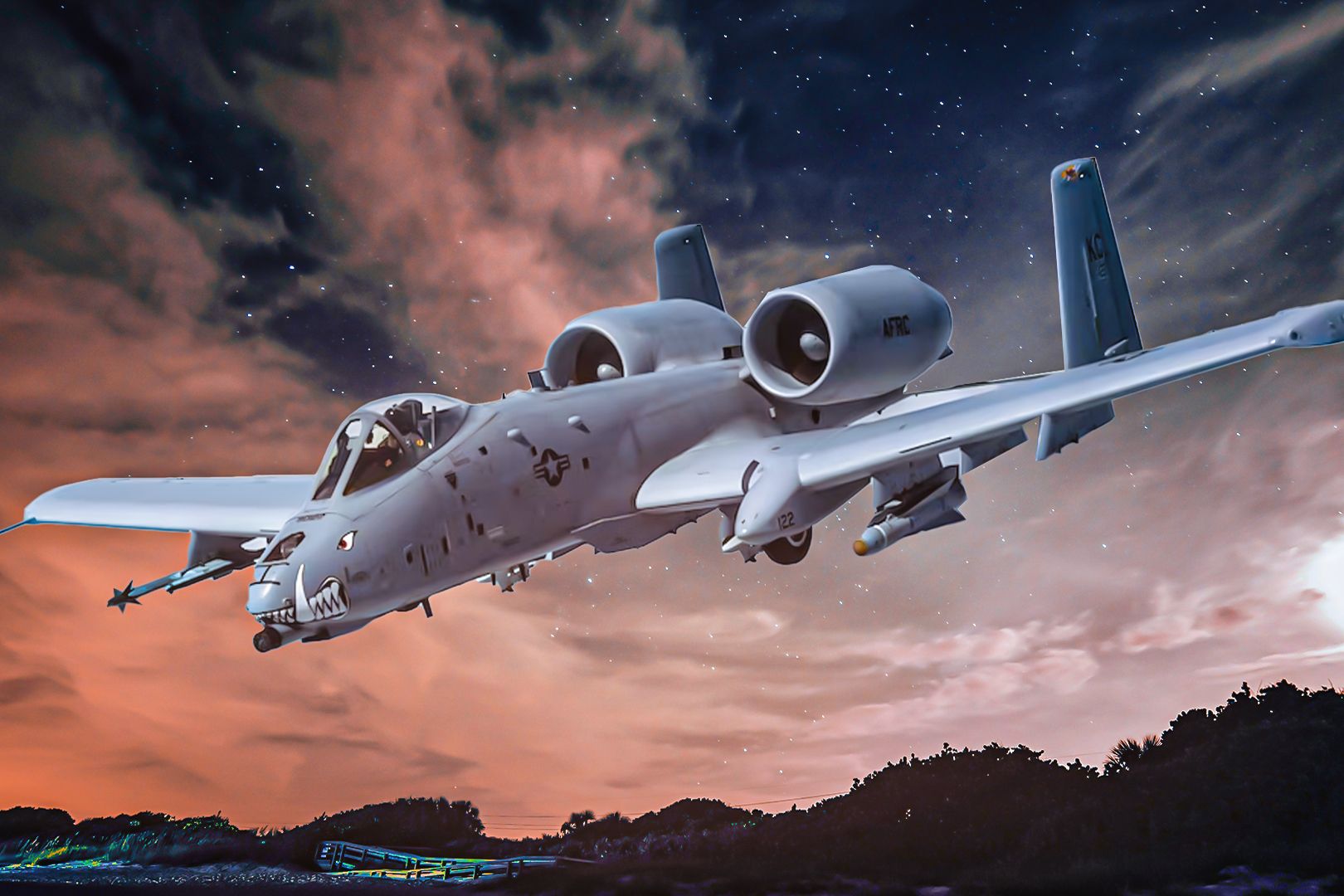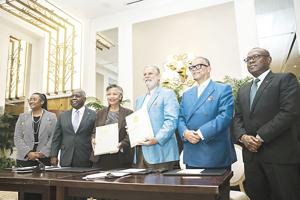When it comes to close air support (CAS), few military aircraft command the level of respect and admiration shown toward the US A-10 Thunderbolt II. Nicknamed the "Warthog" for its rugged good looks and durability, through countless missions where precision, power, and durability were paramount. Introduced by Fairchild Republic in 1977, the A-10 was born from a study commissioned in the 1960s to design a durable Close Air Support aircraft dedicated to safeguarding combat troops on the ground.
Close Air Support is defined by the as "air action by aircraft against hostile targets that are in close proximity to friendly forces and that require detailed integration of each air mission with the fire and movement of those forces." The CAS mission presents unique challenges that few military aircraft can overcome. The A-10 was designed to meet these challenges head on.

include: Below are five noteworthy CAS engagements involving the A-10 Thunderbolt II, highlighting the extraordinary capabilities of this formidable war machine. The mighty Warthog showcased its battle prowess for the first time during the Gulf War in 1991, which saw US-led forces thwart Iraq's invasion of Kuwait. With an impressive mission capable rate of 95.
7 percent, A-10s flew 8,100 sorties and were responsible for launching 90 percent of the AGM-65 Maverick missiles fired during the conflict. A fleet of 132 A-10s contributed significantly to the war effort, performing tank-killing and ground attack missions, shooting down two Iraqi helicopters, and hunting down the elusive Iraqi Scud missile sites. The A-10 Warthog is credited with obliterating over 900 tanks, 2,000 military vehicles, and 1,200 pieces of artillery.
While the Warthog's attack systems would eventually be enhanced by computer systems, A-10 pilots in Operation Desert Storm could not rely on such luxuries. L.T.
Col John Marks, along with fellow A-10 pilot Capt. Eric Solomonson, obliterated 23 Iraqi tanks in one day during Operation Desert Storm. Franks is the only pilot to log over 7,000 hours in a Warthog Major General Paul T.
Johnson shares his experience as an A-10 pilot during Operation Desert Storm in the video below. When Yugoslavia's ethnic cleansing of Albanians threatened stability in the region in March 1999, A-10 Warthogs returned to action in Operation Noble Anvil, the United States contribution to NATO's Operation Allied Force in Kosovo. In Kosovo, A-10s demonstrated their versatility, with missions extending beyond terrorizing tanks.
When F-117 Nighthawk pilot Lt. Col. Darrell Patrick "Dale" Zelko's aircraft was shot down by a Yugoslav version of the Soviet Isayev S-125 "Neva" missile system, A-10s were tasked with escorting and aiding combat search and rescue (CSAR) helicopters in search of the downed pilot.
When A-10 pilot Capt. John A. "Buster" Cherry from the USAF 81st Expeditionary Fighter Squadron spotted Zelko on the ground, Capt.
Chad Franks maneuvered his MH-60 Pave Hawk helicopter down to rescue the pilot. Both Franks and Cherry were awarded the Silver Star for their roles in the mission. The detailed accounts of several A-10 pilots who flew in Kosovo can be read in the approved-for-release report, " The A-10 Warthog is renowned for its massive cannon, but how well can it maneuver? Fearing Iraq was developing weapons of mass destruction in 2003, the United States initiated Operation Iraqi Freedom.
The 60 A-10s deployed to the region to perform CAS mission support showcased a remarkable mission-capable rate of 85 percent, discharging a total of 311,597 rounds of 30 mm ammunition. During Operation Iraqi Freedom, A-10 Warthogs completed 32 special missions to air-drop propaganda leaflets. One particularly perilous CAS mission over Bagdad put A-10 pilot Colonel Kim "K.
C" Campbell (pictured below) and her Warthog to the survivability test. En route to Bagdad to take out Iraqi tanks acting as a command post, the ground forward air controller (FAC) radioed for immediate assistance at another location where U.S.
ground troops were under enemy fire. Campbell's two-ship formation of A-10s wasted no time entering the battle, as 30 mm rounds sprayed from their massive cannons and rockets fired from beneath their wings, leaving behind a trail of devastation. Unfortunately, Campbell's Warthog did not escape unscathed, having been struck by an enemy surface-to-air missile on the final pass.
Col. Campbell's call sign, "K.C.
," stands for "Killer Chick." With both hydraulic systems inoperable, Campbell quickly switched to manual reversion flight control mode, which allowed her to recover and continue flying the badly damaged aircraft. Despite hundreds of holes in the fuselage and tail section, no hydraulics, and a gaping "football-sized hole" on the right horizontal stabilizer, Campbell's extraordinary piloting prowess and quick thinking allowed her to escape enemy fire and return safely to base.
For her actions, Col. Campbell was awarded the Distinguished Flying Cross for Heroism. This, along with many other stories of bravery and lessons on leadership, can be read in Col.
Campbell's book, In response to the September 11, 2001, terrorist attacks, the United States initiated Operation Enduring Freedom on October 7, 2001. The operation’s primary objectives were to dismantle the Taliban regime in Afghanistan, eliminate the Al-Qaeda terrorist network, and bring Osama bin Laden to justice. This operation marked the beginning of the U.
S.-led War on Terror. The A-10's ability to operate in the complex and challenging Afghan terrain combined with its durability proved invaluable in Afghanistan, notably during Operation Anaconda.
After U.S. Army Apache helicopters had taken a beating, and AC–130s were deemed too vulnerable to hostile ground troops during daylight hours, U.
S. Central Command sent five A-10s to the fight. .
"- Throughout Operation Enduring Freedom, the A-10 Thunderbolt II showcased its CAS capabilities and played a critical role in toppling the Taliban and disrupting terrorist networks. USAF brass wants to retire the A-10. That won't please American ground troops, who'll miss the Warthog's close air support (CAS) capabilities.
Operation Inherent Resolve (OIR), initiated in 2014, was a US-led military campaign aimed at dismantling the Islamic State of Iraq and Syria (ISIS). This mission primarily focused on degrading and ultimately defeating ISIS by targeting its infrastructure, leadership, and resources through precise airstrikes and ground operations. In November 2014, 12 A-10s from the USAF 122nd Fighter Wing were deployed to the Middle East.
Warthogs attacked ISIS targets in central and northwestern Iraq nearly every day, flying 11 percent of all USAF sorties in the first two months of OIR. One noteworthy mission occurred two days following the Islamic terrorist attacks in Paris on November 15, 2015, when A-10s participated in the destruction of 168 ISIS-operated oil tanker trucks in Syria. The attack delivered a devastating blow to ISIS funding through the smuggling of oil.
“ - for their exceptional performance during Operation Inherent Resolve. The Squadron was recognized for developing innovative tactics to engage enemy fighters in dense, "danger-close" urban terrains while minimizing civilian and coalition casualties. Despite facing surface-to-air threats and repeated intercepts by Russian aircraft, the 74th FS struck more than 44% of targets with just 12 aircraft over 181 days.
During this time, the unit flew more than 1,600 sorties, amassed 10,000 hours in flight, struck nearly 2,500 targets, and claimed to have taken the lives of more than 3000 ISIS fighters. This Gallant Unit Citation, granted for combined actions during anti-ISIS CAS missions, saw the 74th FS become the first individual squadron to receive this honor. “The 74th FS earned the GUC through an unrelenting level of excellence and determination in executing a difficult mission.
Each day brought unique and unforeseen challenges that tested the decision-making and flying skills of each pilot while in harm’s way. The pilots of the 74th FS performed above-and-beyond their peers in every facet of the mission.” From its introduction in Operation Desert Storm to its contributions in Operation Inherent Resolve, the A-10 Thunderbolt II has proven itself a formidable CAS asset over numerous engagements, delivering unparalleled precision and firepower when it matters most.
The iconic aircraft's retirement from service is planned for 2029, though a suitable replacement has yet to be identified, most recently evidenced by . While the F-35 fell short of expectations, the A-10 reaffirmed what everyone already knew: the A-10 Warthog is arguably the greatest CAS aircraft of all time. May its BRRT! ring out long after its final round has been fired.
A-10 — close air support, OA-10 - airborne forward air control Two General Electric TF34-GE-1 00 turbofans 9,065 pounds per engine 29,000 pounds (13,154 kilograms) 420 miles per hour (Mach 0.56) 16,000 pounds (7,257 kilograms) 800 miles (695 nautical miles).



















